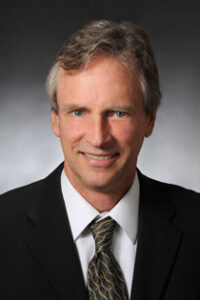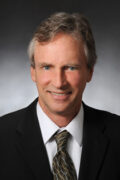Name: Ron Roberts
How long have you been at CNDE? I began at CNDE in August 1989.
Area(s) of expertise: Ultrasound experiments and computational modeling.
Who or what inspired you to pursue your career in NDE? I had an interest in physical acoustics as an undergraduate physics major at Purdue University. I heard in the cafeteria one day that the Air Force was substantially funding research in physical acoustics to transform ultrasound NDT into a science-based discipline. I came to discover that Don Thompson, then at Ames Laboratory, was heading this Air Force program, and that the preeminent elastic wave theoretician in this program was Jan Achenbach at Northwestern University. After completing my Ph.D. with Professor Achenbach, Don Thompson began an effort to convince me to come to Ames, and in 1989, after the establishment of CNDE, he succeeded.
Briefly describe one of your technical contributions to the NDE field. A technical highlight of my career, and of CNDE in general, was the engineering of assured sensitivity inspection for jet engine materials, under the FAA-funded Engine Titanium Consortium. This work pioneered model-based inspection design in which, given the noise scattering characteristics of a specific alloy microstructure, and the physical properties of the defect to be detected, a focused ultrasound inspection is engineered that assures detection of the defect. This development represents the realization of the original Air Force goal, combining fundamental science-based understanding of ultrasound microstructure scattering, ultrasound scattering by defects, and the engineering of ultrasound transducers, to yield a specified defect signal-to-noise. This activity was truly a team effort, calling on the broad technical expertise of numerous CNDE researchers. My specific role addressed implementation of the engineered inspection using then-new phased array technology, for which phased array transducers were designed to generate a specified highly-focused ultrasound pulse throughout the inspection volume.
What advice would you give a researcher just starting out the NDE field? Dig down to the fundamentals. There is always time pressure to proceed superficially, using engineering principles you’ve been told, without fundamental understanding. I advise taking the time to study in-depth, and derive it yourself from first principles. There is peace of mind in truly understanding what you’re doing. Of course, it helps if you work in an environment such as CNDE where this is appreciated, albeit perhaps often on your own time.
